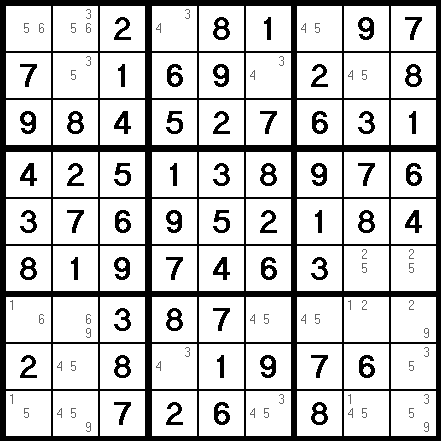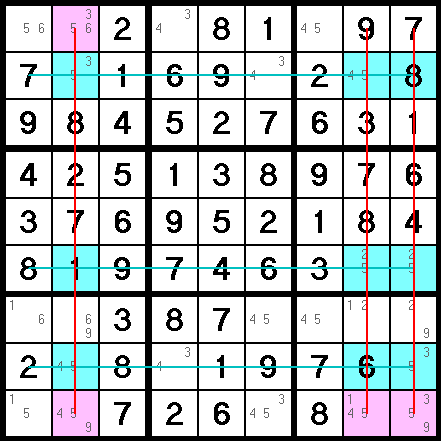

Swordfish
Swordfish is an "X-Wing" on steroids. Just as the X-Wing involves two candidates in two columns or rows, the Swordfish involves three candidates in three columns or rows. These guys are very hard to find. Even if you know it's there, it can take some time to find.
I must confess — this is probably my least favorite technique. It is not super complex to understand — it's just very hard to spot one. But, in the interest of being complete, I will cover it. Take a look at this example:
Here is the same puzzle, but with some markings added for illustration:
Let me say that a different way: The blue lines only have 5s where the red lines cross. Why is this important? Well, it isn't — unless the red lines have other 5s in them somewhere! You see, each of the three blue rows is going to have a 5, and since the possible locations are limited, each row will end up having a 5 in one of the red lines. The result is each red line's 5 is going to be where a blue line crosses it. We don't know which blue line; we just know it's at a blue line. Net result: any "5" along a red line that's not in a blue line can be removed (all the 5s in the pink cells can be erased).
Apparently, some examples of this technique create a pattern that resembles the actual fish it's named after. My own personal experience is that it is not common to find that you need this technique to solve a puzzle. But who knows — it may save you one day! Now, moving on to my favorite…
|







